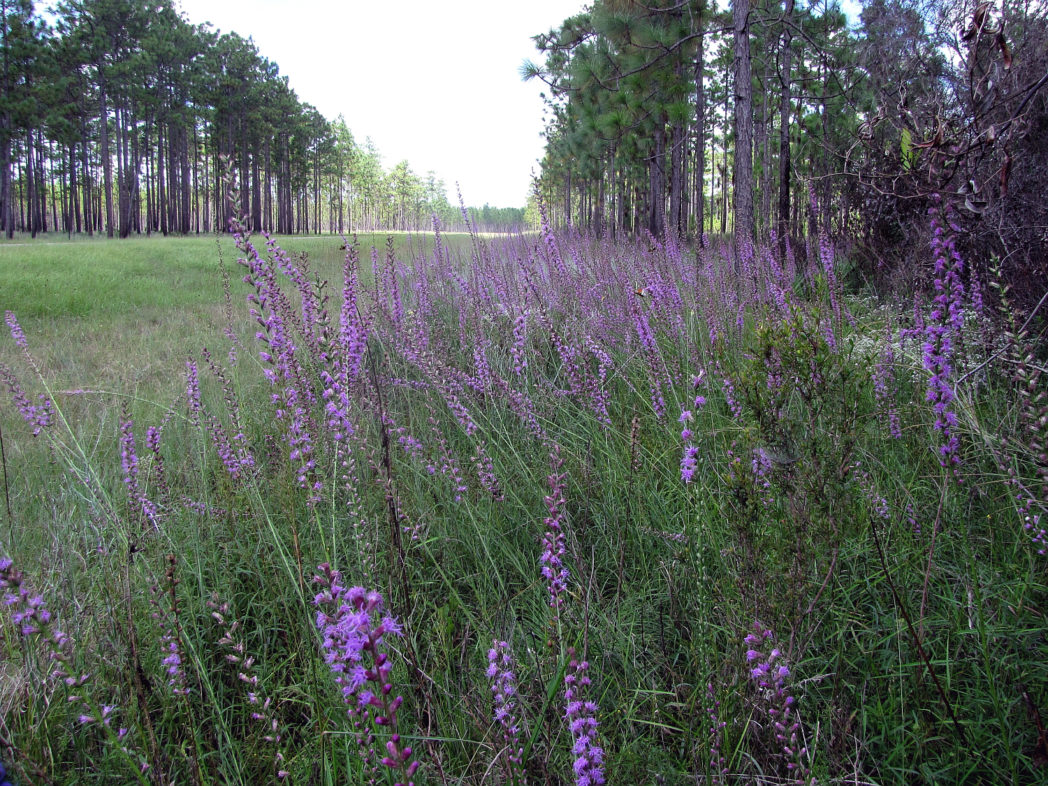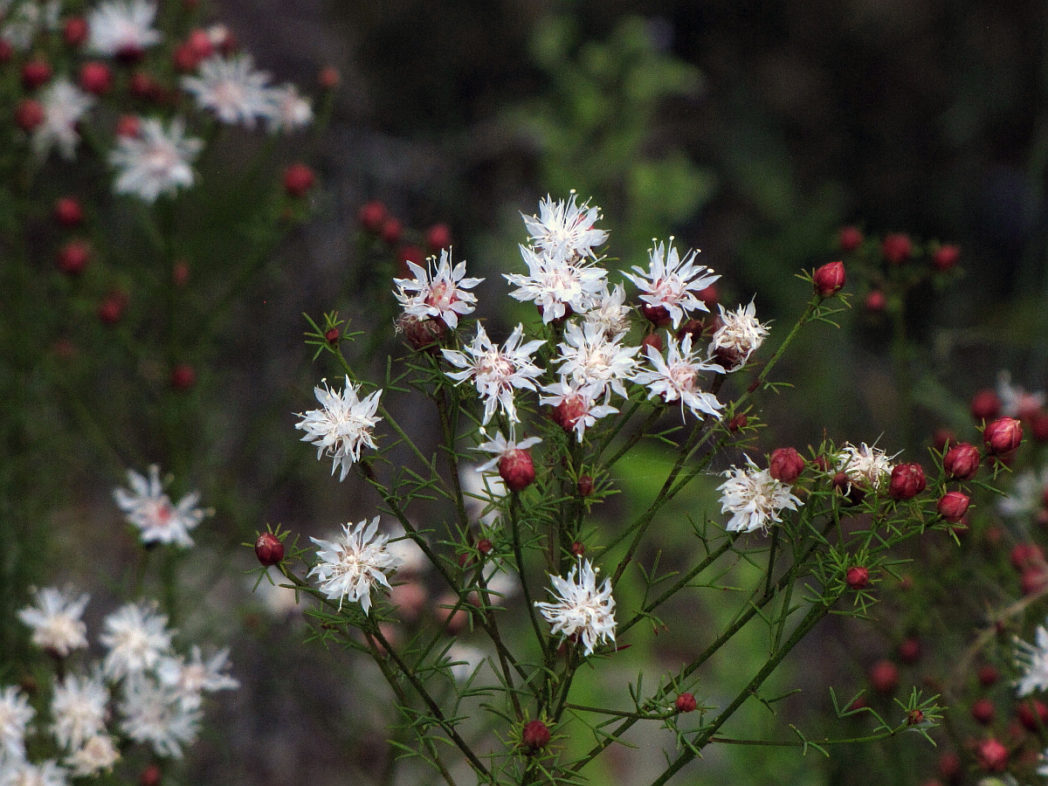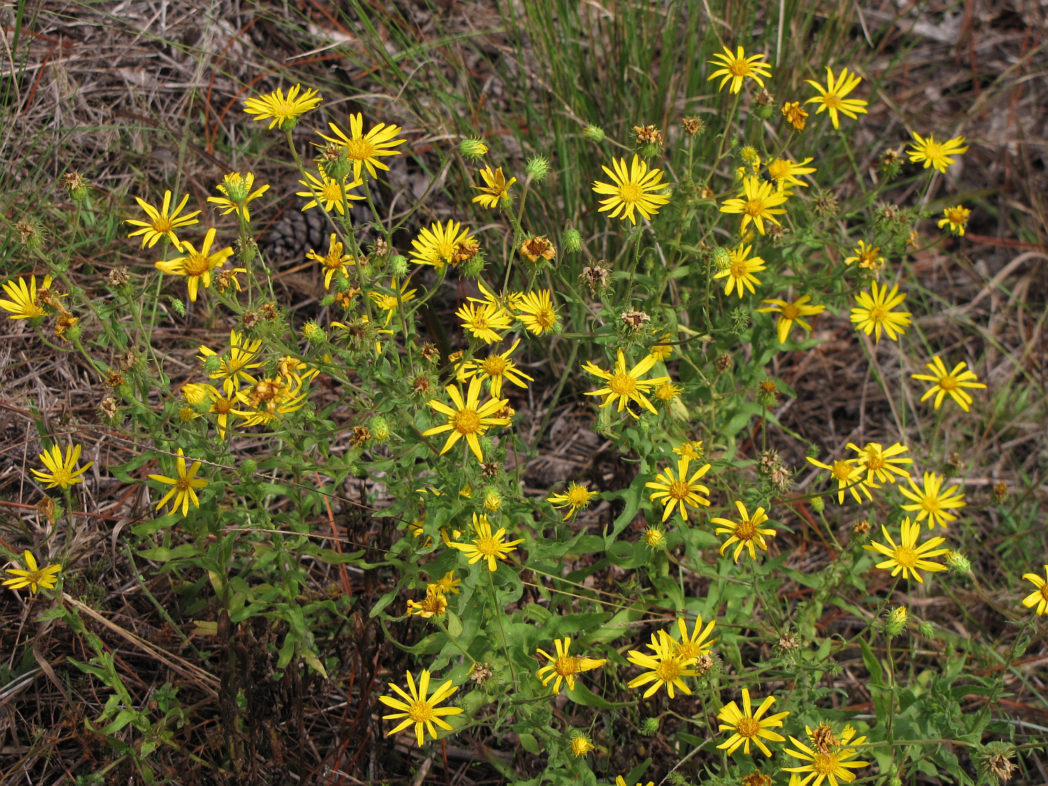Bloom Report: Fall color, Florida style
Pictured above: Goldenaster (Chrysopsis sp.) occurs in sunny areas in dry, sandy soils. Photo by Jeff Norcini
Fall color hard to find in Florida? Not if you travel along rural roads.
by Jeff Norcini
Now is the time to be looking for wildflowers throughout the state. Fall wildflowers are in full bloom, with the best places to find them being open areas without homes or businesses. Those areas, including woodland edges, provide the bright light that many species of native wildflowers thrive in. And rural areas are better than urban environments for two reasons — more natural stands of wildflowers, and expectations for manicured landscapes are lower.

Fall is ablaze with mainly yellow and purple wildflowers, and many of them are in the daisy family, like one of the traditional harbingers of fall, the goldenrods (Solidago spp.). Though many of the fall “daisy family” (Asteraceae) wildflowers lack the showy petals, they still are quite beautiful. In moist sunny areas, look for sunflowers (Helianthus spp.), tickseeds (Coreopsis spp.), Rayless goldenrod (Bigelowia nudata), Oneflower honeycombhead (Balduina uniflora), beggarticks (Bidens laevis and B. mitis), Vanillaleaf (Carphephorus odoratissimus), and Dense blazing star (Liatris spicata). In sunny sites that are sandy, look for blazing stars (Liatris spp.) (pictured above), goldenasters (Chrysopsis spp.), flat-topped goldenrods (Euthamia spp.), Narrowleaf silkgrass (Pityopsis graminifolia), and Coastalplain honeycombheaf (Balduina angustifolia).

If you prefer white wildflowers, thoroughworts (Eupatorium spp.) and Ovateleaf Indian plantain (Arnoglossum ovatum) are common throughout Florida. In North and Central Florida, look for the appropriately named Summer farewell (Dalea pinnata) (pictured above).
Other good areas to view fall wildflowers are:
- Along the Florida National Scenic Trail
- Florida Water Management Districts lands*
- Florida State Parks*
- National forest lands*
- State forest lands*
- Wildlife Management Areas*
* Forested areas and savannahs that are burned typically have showy displays of wildflowers the same year of the burn.
While many of the fall wildflowers perform well as cut flowers in an arrangement, please do not pick them. If you want to preserve the memory of a wildflower, take a picture – it will last longer. So “don’t pick it – click it,” and let others enjoy the beauty. Also, many of our native wildflowers reproduce only by seed. Picking a flower reduces the ability of that plant to reproduce and for that wildflower population to sustain itself.
If you want to pick wildflowers, plant some in your garden or in containers on your patio or porch. Seed packets are available from the Florida Wildflower Seed and Plant Growers Association, and sometimes at garden centers or growers specializing in Florida native plants. To find a native garden center or grower near you, visit the Florida Association of Native Nurseries’ website.
More reasons not to pick wildflowers:
- Picking the flowers of any endangered or threatened species is illegal in Florida. For details, see Florida Statute 581.185 Preservation of native flora of Florida.
- Stopping along a roadside to pick wildflowers can be hazardous to you and other motorists.
Now it’s your turn
If you snap a photo of a showy wildflower site, please share it with other wildflower enthusiasts by submitting it along with location information (such as road number, county, park, state or national forest, etc.) to photos@flawildflowers.org.
Flickr and Yahoo users can upload images to the Foundations’ Flickr group site. Go to www.flickr.com/groups/fla_wildflowers, sign in to your account, and follow the directions for uploading images. Please include location information. If you don’t have a Flickr account, it’s easy sign up for one.

